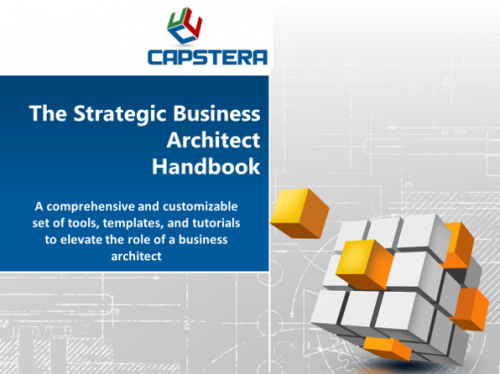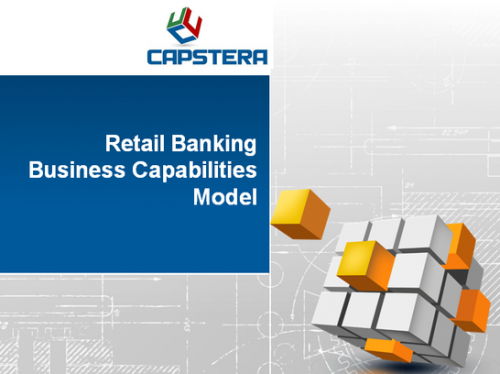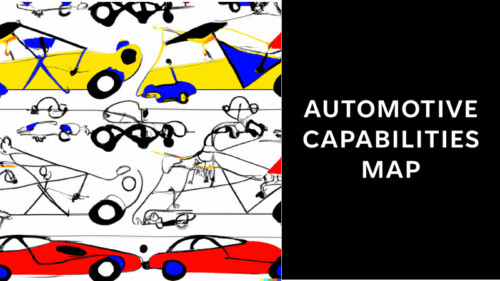Enterprise Business Capabilities Map
Price range: U.S. $2,249 through U.S. $6,749
The Capstera Enterprise business capabilities map is a comprehensive view of the enterprise and a structural blueprint. It is a logical and intuitive decomposition into nearly 2000 granular business capabilities. Today, most companies are in the throes of tectonic shifts and transformation due to globalization, demographic trends, and the digital revolution. The enterprise business capabilities model is an essential “Rosetta Stone” to align business and technology teams with a structurally sound and internally coherent lingua franca. The Capstera Enterprise Business Capabilities Matrix comprises over 1975 capabilities across four levels of depth and granularity.
Enterprise Business Capabilities Map Deliverables:
The deliverable comprises over 1975 business capabilities and includes the following formats:
- An Excel spreadsheet with the list of capabilities grouped into Four Levels.
- A PowerPoint format with the top two levels presented in a nested visualization.
- A Word document with capabilities in a multilevel list format.
- Capability Definitions (to Level 3)
- Capability KPIs (to level 2)
- Business Transformation Overview (an E-Book)
- Practical Business Architecture (an E-Book)
- Plus, several other BONUS Deliverables
Watch Enterprise Business Capabilities Map Intro Video
The Strategic Imperative of Business Transformation
Large legacy enterprises often face various internal factors and external drivers that necessitate business transformation. These factors can influence the organization’s ability to stay competitive, adapt to changes, and ensure long-term growth.
Internal Factors:
-
Outdated business processes: Inefficient or obsolete processes can hinder the organization’s ability to meet evolving customer expectations and compete with more agile rivals.
-
Organizational silos: A lack of collaboration and communication across departments can stifle innovation, hinder decision-making, and slow the organization’s response to market changes.
-
Legacy systems and infrastructure: Older technology and infrastructure can limit the organization’s ability to adopt new technologies, scale operations, or maintain operational efficiency.
-
Cultural resistance to change: Entrenched mindsets and behaviors within the organization can impede the adoption of new ideas, approaches, and technologies, making it challenging to drive transformation efforts.
-
Inadequate talent and skills: A workforce lacking the necessary skills, expertise, and adaptability can limit an organization’s ability to implement and support transformation initiatives.
External Drivers:
-
Market dynamics: Changes in customer preferences, competitive landscape, or industry disruptions can necessitate a transformation to remain competitive and capture new opportunities.
-
Technological advancements: The rapid pace of technological innovation can create challenges and opportunities for legacy enterprises. Adapting to new technologies and digital capabilities is often essential for staying relevant and competitive.
-
Regulatory and compliance changes: Changes in laws, regulations, or industry standards may require large legacy enterprises to transform their business practices, processes, or technologies to remain compliant and maintain their market position.
-
Globalization and increased competition: The expansion of global markets and the rise of new competitors can pressure large legacy enterprises to transform to maintain or improve their market share.
-
Economic factors: Economic fluctuations, such as recessions or periods of rapid growth, can impact business performance and necessitate a transformation to adapt to changing conditions.
-
Societal and environmental concerns: Growing awareness of social and ecological issues can push organizations to transform their business models, practices, and operations to align with societal expectations and sustainable practices.
Today, every business has become a technology business, and yet there remains a gap between what business wants and what IT teams enable. With the fast pace of innovation and the competition from upstarts and established firms, companies worldwide have to harmonize and align their business and IT functions and foster a structured way to IT enable business needs. An enterprise capabilities map is an excellent starting point for transformational endeavors with a stable and intuitive view of the enterprise functions. The enterprise business capabilities model is a comprehensive, customizable, and coherent deliverable that helps business architects, enterprise architects, CIOs, and business and IT leaders in their quest for business and technology optimization.
What is an Enterprise Business Capabilities Map?
Capstera’s comprehensive and customizable enterprise business capabilities map is based on a generic large, complex enterprise encompassing all aspects of the value chain. The enterprise business capability model has over 1975 capabilities often decomposed to Level 4.
The enterprise business capabilities map encompass the following areas:
-
Business Management
-
Research and development
-
Product Development
-
Production and Manufacturing
-
Supply Chain Management
-
Marketing and Sales Management
-
Customer Management
-
Finance and Accounting
-
Human Resources
-
Legal, Risk, and Compliance
-
IT and Infrastructure Management
What is the Value of the Enterprise Capabilities Map?
A business capabilities model is a fundamental and foundational entity in the business architecture continuum. The Capstera Enterprise Business capabilities map encapsulates the essence of all business functions with a detailed, multilevel capabilities list.
There are several benefits from business capabilities, including, among others:
- Foster an alignment between business and IT using capabilities as a common language.
- Capabilities are structurally sound and internally coherent abstractions of business functions.
- A capability-based roadmap eliminates redundancy and replication and focuses on capability evolution.
- Juxtaposing capabilities and systems/applications provide a footprint analysis and can lead to better application portfolio rationalization decisions.
| Free Bonus Deliverables |
|---|
| Buy a Business Capabilities Map from Capstera.com and get the following FREE bonuses. |
| Business Architecture Uses Cases, Influence, and Impact |
| Business Architecture Leader - Role Description |
| Business Capability Profile Template |
| Business Architecture Framework Template |
| Business Capability Modeling Overview |
| Business Capabilities to Application Mapping Template |
| Business Capability Assessment Criteria - Definitions and Notes |
| Business Example of how to link Capabilities to Microservices |
Created by business architects and domain experts, the Enterprise business capabilities list is detailed, in-depth, and conforms to the construct of MECE (mutually exclusive and collectively exhaustive).
Who Should Use the Enterprise Business Capabilities Matrix?
Primary Users:
- Business Architects
- Enterprise Architects
- Business Analysts
Secondary Users:
- Solution, Data, and Technical Architects
- Product and Project Managers
- Corporate Strategists
- Executives from Various Functions who want to grasp the Essence of the Business at an elemental level
Provisos:
- We cannot accept refunds or returns as the products are digital deliverables.
- Please realize that a generic capability model may or may not be fully applicable in some circumstances.
- We do not offer implied or explicit warranties and whiteboarding on an as-is basis.
- The sale does not include customization or implementation help.
- Please review our standard Ecommerce Store Terms and Conditions.
Need Customization Help?
Enterprise Business Capabilities Map
Price range: U.S. $2,249 through U.S. $6,749





